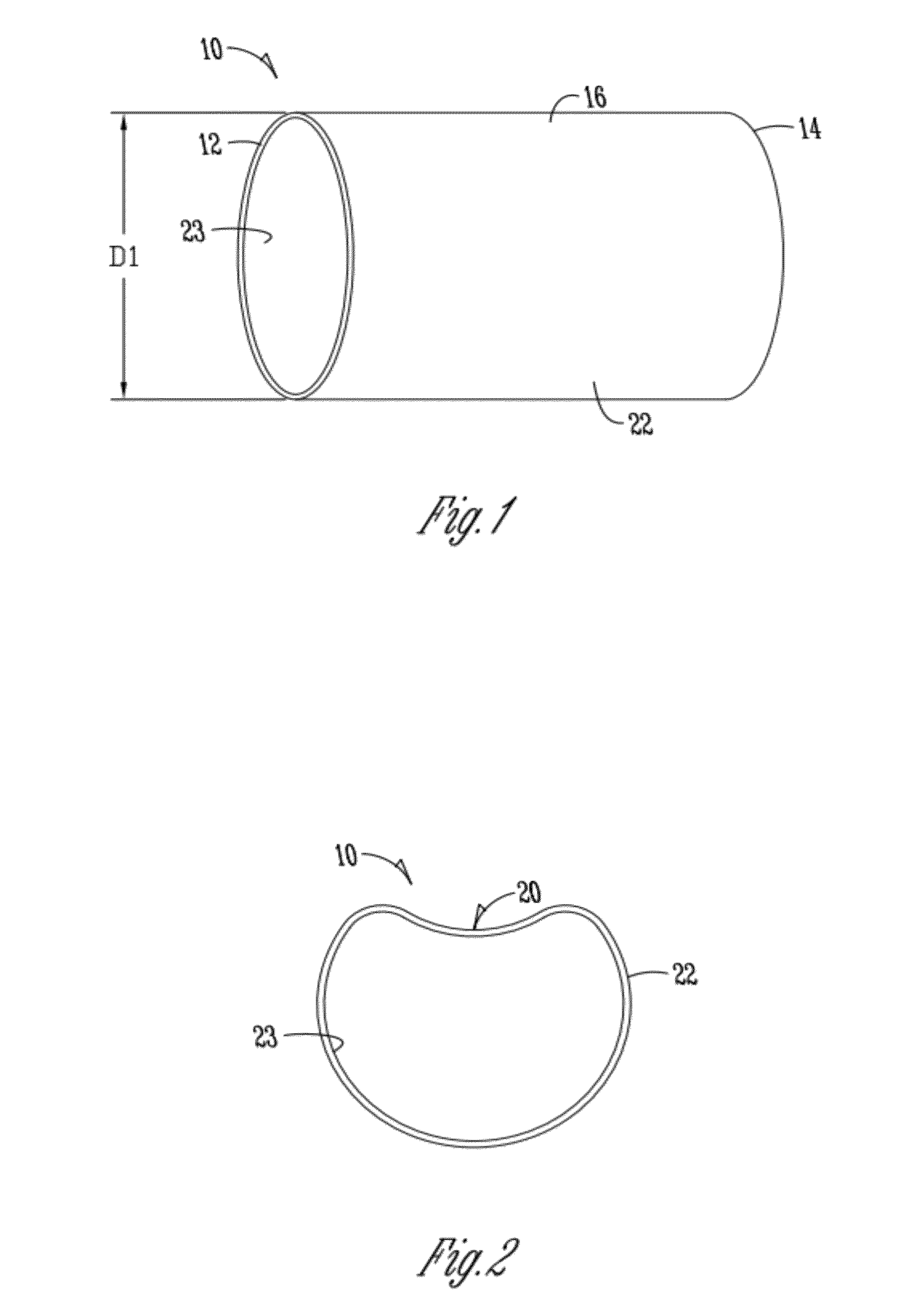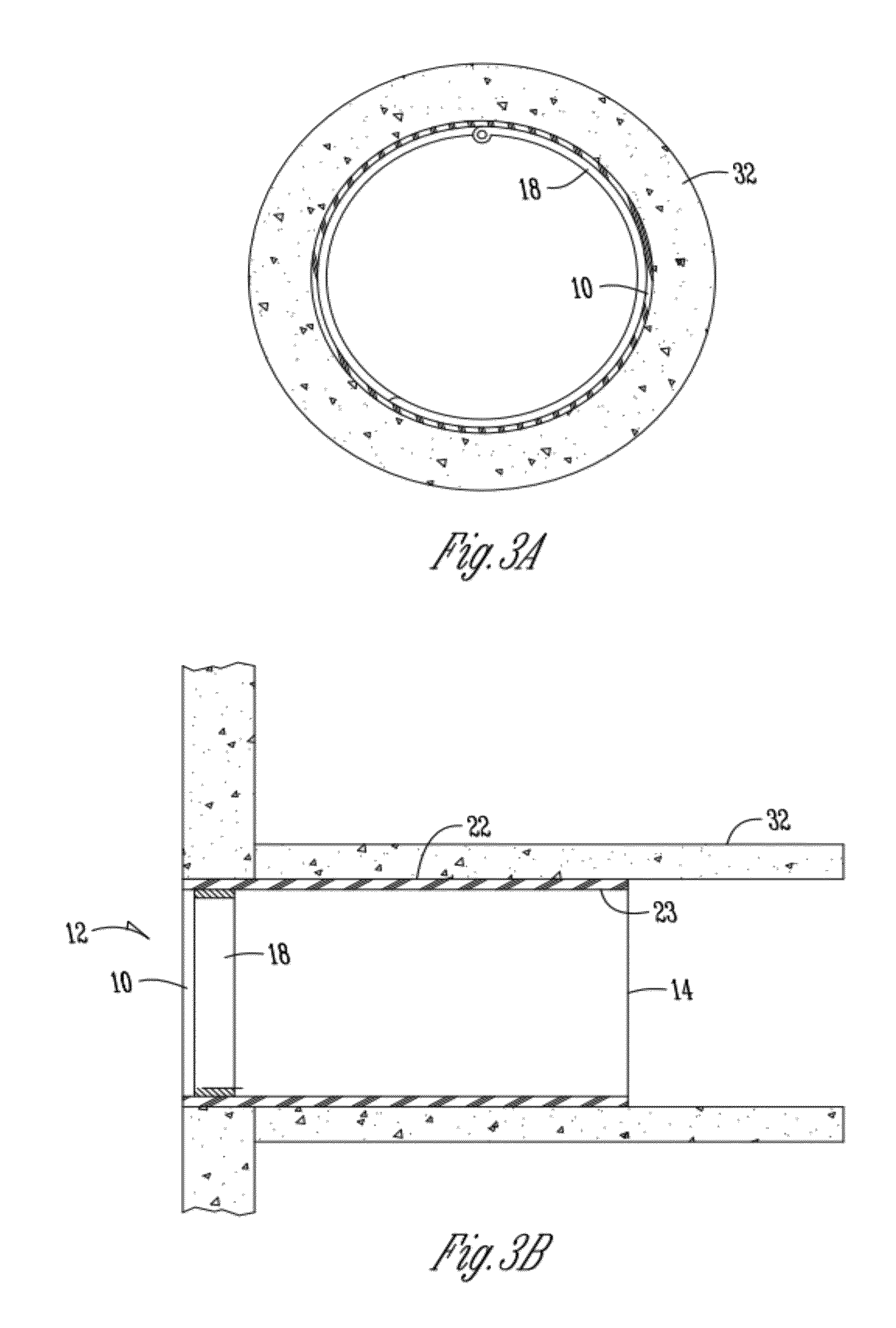Apparatus and method for sealing pipes and underground structures
a technology for underground structures and apparatus, applied in mechanical apparatus, cable terminations, manufacturing tools, etc., can solve problems such as sewer system failure, system blockage, water infiltration, and sewer system failure, and achieve the effects of preventing the infiltration of water within the manhole, convenient installation, and economical manufactur
- Summary
- Abstract
- Description
- Claims
- Application Information
AI Technical Summary
Benefits of technology
Problems solved by technology
Method used
Image
Examples
Embodiment Construction
[0035]The present invention relates to an apparatus and method for repairing or sealing a manhole or other underground structure, the junction between a manhole or other underground structure and a pipe in fluid communication therewith, or the end of a buried pipe, such as underground sewer pipe and the like. The end of a pipe is sealed with the use of a pipe liner and a sealing member. Alternatively, a manhole or other underground structure is sealed by the use of one or more sealing members and a manhole liner.
[0036]The following definitions of terms are employed throughout the specification and claims:
[0037]A “pipe liner” is defined as a material that is used to provide a lining to a pipe. Pipe liners include but are not limited to cured-in-place pipe liners, folded liners, or spray-on liners.
[0038]A “cured-in-place pipe liner” is a fabric capable of holding a resinous material.
[0039]A “folded liner” is a material constructed of a thermoplastic, such as High Pressure Polyethylene...
PUM
| Property | Measurement | Unit |
|---|---|---|
| length | aaaaa | aaaaa |
| length | aaaaa | aaaaa |
| diameter | aaaaa | aaaaa |
Abstract
Description
Claims
Application Information
 Login to View More
Login to View More - R&D
- Intellectual Property
- Life Sciences
- Materials
- Tech Scout
- Unparalleled Data Quality
- Higher Quality Content
- 60% Fewer Hallucinations
Browse by: Latest US Patents, China's latest patents, Technical Efficacy Thesaurus, Application Domain, Technology Topic, Popular Technical Reports.
© 2025 PatSnap. All rights reserved.Legal|Privacy policy|Modern Slavery Act Transparency Statement|Sitemap|About US| Contact US: help@patsnap.com



